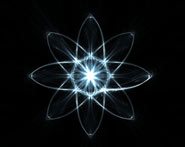


 الفيزياء الكلاسيكية
الفيزياء الكلاسيكية
 الكهربائية والمغناطيسية
الكهربائية والمغناطيسية
 علم البصريات
علم البصريات
 الفيزياء الحديثة
الفيزياء الحديثة
 النظرية النسبية
النظرية النسبية
 الفيزياء النووية
الفيزياء النووية
 فيزياء الحالة الصلبة
فيزياء الحالة الصلبة
 الليزر
الليزر
 علم الفلك
علم الفلك
 المجموعة الشمسية
المجموعة الشمسية
 الطاقة البديلة
الطاقة البديلة
 الفيزياء والعلوم الأخرى
الفيزياء والعلوم الأخرى
 مواضيع عامة في الفيزياء
مواضيع عامة في الفيزياء|
Read More
Date: 20-9-2020
Date: 18-9-2020
Date: 20-9-2020
|
GASES IN OUTER SPACE
Outer space was once believed to be a perfect vacuum. However, this is not the case. There is plenty of stuff out there, and much of it is hydrogen and helium gas. (There are also trace amounts of heavier gases and some solid rocks and ice chunks as well.) All the atoms in outer space interact gravitationally with all the others. This might be hard to imagine at first, but if you think about it, there’s no escaping it. Even a single atom of hydrogen exerts a gravitational pull on another atom 1 million km away.
The motion of atoms in outer space is almost random but not quite. The slightest perturbation in the randomness of the motion gives gravitation a chance to cause the gas to clump into huge clouds. Once this process begins, it can continue until a globe of gas forms in which the central particle density is significant. As gravitation continues to pull the atoms in toward the center, the mutual attraction among the atoms there becomes greater and greater. If the gas cloud has some spin, it flattens into an oblate spherical shape and eventually into a disk with a bulge at the center. A vicious circle ensues, and the density in the central region skyrockets. The gas pressure in the center rises, and this causes it to heat up. Ultimately, it gets so hot that nuclear fusion begins, and a star is born. Similar events among the atoms of the gas on a smaller scale can result in the formation of asteroids, planets, and planetary moons.



|
|
|
|
5 علامات تحذيرية قد تدل على "مشكل خطير" في الكبد
|
|
|
|
|
|
|
اللجنتان العلمية والتحضيرية تناقش ملخصات الأبحاث المقدمة لمؤتمر العميد العالمي السابع
|
|
|